

European
Nuclear Society
e-news
issue 45: July 2014
I was recently in Budapest for an international nuclear conference that was attended by senior government and EU officials, representatives of the nuclear industry and other stakeholders. It focused on the current state and future direction of the nuclear industry in Europe, on EU energy policy in general – and nuclear in particular – and on the latest reactor technology in support of global new build. The importance of the agenda and the stature of the speakers present, which included ENS Secretary General, Jean-Pol Poncelet, were matched only by the keen interest shown by delegates in a global phenomenon that is currently sweeping the world. No, it’s not nuclear new build, but a sporting event that generates commercial and media interest of gigantic proportions; an event that fires the imagination, stirs the passion and involves sums of money that make your eyes water.
Well, unless you have spent the past couple of weeks on a penal colony on Venus, you can’t have failed to notice that the 2014 FIFA Football World Cup has been monopolising the world’s TV channels, dominating the media and preoccupying the waking hours of millions of football addicts around the world. I am reliably informed that this sporting extravaganza, with its iconic pictures of the Copacabana Beach, the Sugar Loaf Mountain and the Corcovado, is even popular with people who don’t usually follow football. Well, whether the World Cup is a passion for you, or whether you prefer to watch grass grow – yes, believe it or not there are people who are not gripped by football fever – you cannot deny that this mega event has to a large extent taken over the collective consciousness of the planet. Marx famously remarked that ‘religion is the opium of the people.’ Well, he never got to see the World Cup.
You could be forgiven, in all the media frenzy surrounding the competition, for temporarily losing sight of the importance of the recent European Parliament elections and the nomination of a new EC President. Voter apathy and a general lack of interest in the Machiavellian arts made sure that the latter event was never likely to compete with the former, at least for a majority of European citizens. To be fair, what chance did the new Assembly have to really make its presence felt when the eyes of the world were firmly fixed on Rio de Janeiro, Sao Paolo and Belo Horizonte? If truth be told, many MEPs are probably at least as interested in watching the matches on a giant screen as they are in campaigning for election to a committee or getting to know their new electorate.
And yet these political events cannot be dismissed as mere bagatelles. Indeed, they may well have an impact, subtle or otherwise, on the future direction of nuclear energy policy, or on how funding and support for research is allocated and managed. We shall see. Will a new ITRE (Industry Research and Energy) Committee in the European Parliament pursue a slightly different agenda to that of its predecessor? Who will be the next Research Commissioner, and what are likely to be his or her priorities? These are legitimate questions. Of course, the change might be minimal. But, long after the memory of the great goals and inept refereeing performances has faded away, and we have been weaned off the drug of football, even a small degree of political change could influence the framework within which the nuclear science community will be expected to work in the future.
I was amazed and amused during the conference in Budapest to see how many speakers suddenly started using footballing analogies and expressions in their presentations. They really grabbed participants’ attention. This new populist vernacular was a godsend for emphasising points and highlighting issues with a splash of colour and humour. All of a sudden, utilities were told to ‘keep their eyes on the ball’. Governments were urged to create ‘a level playing field’ for nuclear, to avoid ‘scoring an own goal’ by failing to acknowledge its many virtues. ‘Defence in depth’ became a principle shared not only by nuclear power plants, but also by well organised defensive-minded teams. The conference was a great success, thanks largely to the quality of speakers and diversity of the programme. Rather than being a distraction, the World Cup actually added something to the proceedings; something that it was difficult to quantify or define, but something tangible none the less.
As the participants left at the end of the conference to catch their planes home or to book a place in the local pub for the next round of matches, I couldn’t help being struck by how much something can unite people, trigger emotion and involvement and focus the mind. Ironically, nuclear energy only tends to provoke such an emotional response, or such blind devotion among those who already oppose it. Perhaps there is something we can learn from this global football festival when it comes to speaking to people on their terms, in a language that is universal, comprehensible, appealing and relevant to their lives. Using emotion to articulate key messages is not a skill that the nuclear community is particularly renowned for, but surely it’s never too late to learn new skills?
|
|
http://www.euronuclear.org/e-news/e-news-45/presidents-contribution.htm


Since my last letter, we held our European Nuclear Conference (ENC 2014) in Marseille, from 12 to 15 May. I apologize to those readers who attended the conference and who will already have read my words, but let me recall what I said in the conference brochure:
“The European Nuclear Conference, which takes place every two years, is the gathering of the 23 nuclear societies from 23 countries in Europe and beyond. It is both an occasion to hear about the latest news on many hot topics concerning nuclear energy in Europe and to present in the parallel sessions technical, scientific and societal results of importance for the speakers, the experts and the public at large.
|
I often say that the essence of nuclear energy in Europe nowadays is "diversity"; diversity in the energy policies of the 28 Member States, naturally reflected in our 23 member societies. This diversity also appears in the numerous papers (over 250) that you will be presenting and discussing this week in Marseille. All the general topics on any nuclear conference agenda are there: Reactors and the technologies for all of their sub- components, fuel both |
inside and outside the reactors in the nuclear cycle, operations, new build, safety and severe accidents, nuclear technologies for life sciences - a fascinating subject both from a scientific point of view, but also because of its implications for social acceptance.
The next item in which diversity manifests itself in our European Nuclear Conference is authorship. It is reassuring to see that many institutions from all over Europe team up in research projects to publish papers at ENC 2014. This is not so for all papers, of course. Some big research organisations will present ‘stand alone papers’ since they have within their own limits all the necessary capabilities. Therefore, I have looked a bit more closely at the papers where 5 institutions or more have grouped together. Curiously, those papers appear in the technical fields of the fuel cycle and waste conditioning. Can we say that European coordination has brought together diversity and convergence in a field where society expects nuclear energy to make the most important progress? In research and in the development of medium-level waste projects, at least, the answer is ‘yes’. For true industrial solutions to high-level waste disposal, we will have to wait a few more ENC’s to witness the success of national programmes in Sweden, Finland, the northern countries and France. We support them wholeheartedly. But let us come back to this conference and consider our community as a whole. Sometimes we think that travelling far away to conferences in North or South America or in Asia will give us not only new ideas for research, this is to be expected, but also solutions to our European problems. But let me quote an excellent colleague speaking in the Belgian press (l’Echo, January 2014), Dr.Hamid Aït Abderrahim, Vice Chairman of the Sustainable Nuclear Energy Technology Platform (SNETP): ‘You do not need to travel very far to find excellence’. Indeed, excellence is well-established in Europe, in its industry, in its research centers whether they are funded by government or by private money. Come and see it for yourself in Marseille, at ENC 2014. I look forward to meeting you there.”
With the hindsight given by the 2 months that have elapsed since the event, I can confirm the ideas and impressions that I expressed in the booklet: ENC 2014 was a success in every way, thanks to both the high-level presentations on the status of nuclear energy in Europe and overseas and to the excellent technical presentations given by teams - large and small - in all the fields listed above. My only wish is that we keep it up in the future and that we encourage our members to make ENC 2016 as successful as ENC 2014.
Noel Camarcat
President of the European Nuclear Society.
http://www.euronuclear.org/e-news/e-news-45/ENC2014.htm


The European Nuclear Conference (ENC 2014) took place in Marseille, from 11 – 14 May. This flagship ENS conference provides a shop window for the whole nuclear community to showcase the research that is being carried worldwide into the many varied applications of nuclear technology. ENS NEWS N° 45 features several reports on the conference that reflect the broad range of topics covered during the plenary and parallel sessions. The first report, by ENS, puts the spotlight on the first plenary session, which addressed the crucial topic of nuclear new build. (Editor-in-Chief)
There are currently 5 nuclear reactors being built in Europe (in Finland, France and Slovakia) and a further 20 planned (Bulgaria, Czech Republic, Finland, Hungary, Poland, Romania, Sweden, Slovenia and the UK). However, the scale of new build is truly global, with a total of 72 being built around the world, including in countries like India, China, Argentina, Brazil, Korea and Russia. The opening Plenary Session of ENC 2014 put the conference spotlight on the many opportunities and challenges that new build has to offer for the global nuclear community.
Agneta Rising, Director General of the World Nuclear Association (WNA), chaired the session. Before inviting the keynote speakers to give their presentations and launching a subsequent debate with the conference floor she first set the political scene in Europe.

She briefly highlighted how the current political landscape in Europe is varied and polarised – and, therefore, so too is the commitment to new build. Countries like the UK, Poland and Sweden, driven on by security of supply imperatives and the need to cut greenhouse gas emissions to fulfil their climate change obligations, are investing heavily in new build. Elsewhere, Germany, for example, has taken the opposite track. By opting to phase out all nuclear and, illogically, replace it with more fossil fuels in the short term, Germany’s climate change obligations appear unlikely to be met, Ms Rising highlighted. Even in France, Europe’s foremost nuclear country, the current government wants to reduce the country’s nuclear share from 75% to 50%. In short, the nuclear topography in Europe is patchy. Clearly, governments in Europe should do more to support nuclear as a whole.
The first speaker to step up onstage was Keith Parker, Chief Executive of the Nuclear Industry Association (NIA) in the UK, and President of FORATOM. He presented a case study from the UK that illustrates how to develop nuclear new build supply chain capability and provide incentives for small and medium-sized enterprises (SMEs) to invest in it. He first outlined the UK’s ambitious new build programme, which is headed by three nuclear consortia, EDF Energy, Horizon and NUGEN, and features six reactors (AREVA’s EPR, Westinghouse’s AP1000 and the Hitach-GE ABWR) at sites including Hinkley Point, Sizewell, Wylfa and Oldbury. Around 60,000 jobs are involved in the nuclear supply chain and as new build kicks on this number will increase.
The NIA has campaigned intensively to raise awareness among SMEs of the benefits of new nuclear business and published an Essential Guide for the Nuclear New Build Supply Chain. The campaign generated considerable interest. In addition, a Capability Report was also published to highlight how skills need to be upgraded and refreshed since it is twenty years since the last nuclear power plant was built. In the UK, the current skills capability level is equivalent to around 70% of that required for a new build project. Companies need to upgrade their skills set in order to be competitive with those in France. At the same time, however, they also need to cooperate with their French companies to achieve this goal.

Nuclear energy is seen as priority economic sector in the UK, offering great potential for economic growth. Opportunities also exist for UK supply chain companies to do business abroad. As a result of the inclusive government-industry dialogue that is going on in the UK, which includes regulators and all actors in the whole nuclear cycle, companies are able to make informed decisions having gained a holistic view of whole nuclear cycle and supply chain. In short, the UK’s supply chain needs to expand to meet these ambitious nuclear targets and efforts are being focused on attracting new companies to bring about this expansion. The NIA’s Business Support programme offers companies of all sizes the chance to benefit from the national and international business opportunities that new build provides.
The next speaker was Jorma Aurela, of the Finnish government’s Ministry of Employment and Economy. He began by providing an overview of the Finnish nuclear scene, including giving updated information on the Olikiluoto 3 (TVO) construction project and on the planned Hanhikivi (Fennovoima) NPP. He also outlined Finland’s spent fuel and radioactive waste management programme.
Mr Aurela then addressed the main theme of his presentation, the challenges that governments face when deciding and planning for new build. Essentially, these challenges are political, social and economic. He first used a ‘mind map’ to describe the political challenges posed by new build. This sustainability assessment model developed by the University of Michigan illustrates how three types of challenges or ‘spheres of sustainability’ - environmental, social and economic – impact upon the perceived sustainability of new build. This analytical device was instrumental in helping decision-makers in Finland make up their mind about new build. The main political challenges identified are local, national and international questions, climate change considerations and EU policies.
The technical challenges that new build posed in Finland, according to Mr Aurela, related to key issues such as infrastructure, waste management, environmental and nuclear law (which are not always in harmony), facility siting, technological delays, human resources, etc.
The economic challenges of new build that were considered at length by decision-makers in Finland related primarily to competitiveness, the poor state of electricity markets and financing mechanisms, including supplier-driven financing, cooperatives, equity funding and intergovernmental agreements.
In conclusion, MR Aurela said that each case is different and circumstances can vary a lot. He emphasised that one weak link in a new build project can ruin its chances of receiving a decision in principle (DIP) and that waste management and a poor financial climate are often the most problematical factors.
Paul Rorive, Director of Nuclear Activities at GDF Suez, Belgium, then addressed delegates on the subject Towards nuclear new build: Outlook and challenges. Mr Rorive began by outlining the history of nuclear in Belgium, where GDF Suez operates two NPPs – Tihange and Doel. He then outlined the vision of GDF Suez, namely to ‘maintain, preserve and promote’ nuclear energy by consolidating its nuclear assets and developing new capacity.
He then asked the question: Where does Belgium go from here now that it has decided to phase out nuclear? Well, GDF Suez is supporting new build abroad. So, switching his attention to the international new build market, he outlined the main criteria used when assessing the feasibility and profitability of new build projects abroad. A major evaluation process is undertaken before choosing which country to approach. GDF Suez prefers to develop new nuclear as a co-owner and operator because it sees itself above all as a provider of electricity. It applies certain evaluation criteria when assessing the suitability of a project abroad. These criteria include a stable and long-term political commitment, a clear legal and regulatory framework, technology choices, radioactive waste management solutions, financing, risk mitigation and public acceptance. As far as GDF Suez is concerned, its strategy is - once these profitability criteria have been assessed - to sign formalised contracts, share costs with local nuclear operators or partners and have clear governance from the very beginning of a project. This process was applied when setting up NUGEN and for the partnership agreement with Toshiba. Another example of a chosen country is Turkey, where the Sinop Project (Turkey has signed an agreement with GDF Suez, Mitsubishi Heavy Industries and Tochu to build 4 units) is currently in the pre-development phase.

Mr Rorive then highlighted the support that GDF Suez is giving to the development of ‘high safety level’ Generation III reactors through the agreements it has signed with 3 reactor suppliers, for the EPR, AP1000 and ATMEA1 reactors.
After outlining his company’s efforts in the area of human resources development, including its recruitment and retention campaigns and its training programme, he gave participants an overview of the extensive advertising campaigns that the Belgian Nuclear Forum has carried out in recent years. These campaigns aimed to inform the Belgian public more about how nuclear energy contributes to their daily lives and, by so doing, raise the profile and increase public acceptance of nuclear in Belgium.
The final presentation of the first plenary session was given by Beata Sparazynska, of the Polish Ministry of Economy. An expert in nuclear law, Ms Sparazynska gave a broad brush stroke of the current state of play and prospects for new build in Poland. She began by outlining the Polish energy mix, highlighting her country’s ‘overbearing dependence’ upon coal and lignite. This led to a detailed appraisal of the economic justification behind Poland’s decision to opt for nuclear energy. Essentially, Poland decided to go nuclear for the first time, because rising electricity consumption forecasts, ageing existing power plants, the need to reduce CO2 emissions in order to be compatible with climate change mitigation goals, the systemic vulnerability of the Polish energy market and little room for energy savings, all contributed to making the need for increased capacity very urgent, thus reinforcing the case for nuclear. In 2025, nuclear will be the cheapest source of electricity for Polish consumers. In short, they opted for nuclear because long-term security of supply needs, maintaining electricity prices at acceptable levels, and reducing CO2 emissions are best served by introducing nuclear power. What’s more, she added, nuclear will bring Poland’s economy benefits beyond the energy sector, particular in the field of innovation, engineering capacity and new jobs.
Ms Sparazynska then pointed the way forward by underlining Poland’s nuclear energy roadmap, which was finalised in January 2014. At the moment, the main components of Poland’s new build programme are: the setting up of the required institutional framework, the adapting of the legal framework (huge amendments have had to be made to nuclear power law), changing the law related to investments, the development of human resources (including new university courses in Poland and study internships in France), a widespread public information and education campaign, considerable support for R&D support (two research institutes have been merged with a separate new nuclear power division) and expert collaboration to support the setting up of a new regulator.
The site selection process for the building of the first ever NPP in Poland is well underway, with 3 main locations competing. PGE, Poland’s largest utility, is carrying out detailed investor analyses. However, the government’s decision-in-principle on investments still has to be made.
On the question of radioactive waste in Poland, one surface repository will be closed in 2020. The location of a new site is currently being investigated, with the main future focus being on the choice of a deep underground repository.
After the presentations a roundtable debate on the subject of nuclear new build took place involving nuclear suppliers. It gave rise to a number of comments and questions from the floor and prompted the active participation of delegates. The panel members were: Arthur de Montalembert, Executive Vice President Business Development, AREVA; Mike Kirst, Vice President, Strategy and External Affairs, Westinghouse EMEA; Nikolai Drozdov, Director of the International Business Department, Rosatom; Philippe Anglaret, President, French Nuclear Suppliers Association; David Powell, Vice President Europe Region, GE Hitachi and David Boath, Chief Engineer, AMEC.
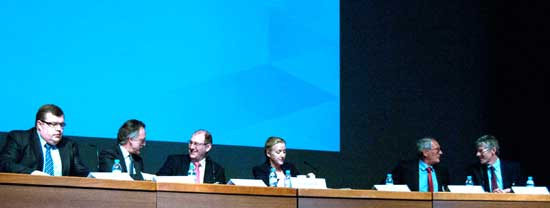
This first plenary session of ENC 2014 above all made delegates focus on the many economic, social and environmental benefits that nuclear new build in those countries that are investing in - or considering investing in - nuclear new build. The challenges, political, economic and social, are numerous too. But new build is here to stay and is truly global.
http://www.euronuclear.org/e-news/e-news-45/ENC2014-2.htm


Many citizens probably know little about the many non-electricity-generation applications of nuclear technology. They probably aren’t very aware of just how much nuclear technology is part of their everyday lives. On Day 2 of ENC 2014 the opening Plenary Session, which was entitled: Nuclear technology for life sciences and other applications, was chaired by Frank Deconinck, of the Vrije Universiteit Brussels. Some of the many applications of nuclear technology were duly spotlighted during the session. Here is a blow-by-blow account of the session (Editor-in-Chief)
The first speaker to address ENC 2014 delegates was Nicolas Foray of INSERM, France’s National Institute for health and Medical Research. The title of his presentation was Hypersensitivity to low doses during mammography. Mr Foray first set the scene with regards to breast cancer, emphasising how men too – contrary to popular belief – can get breast cancer too. He then gave a historical overview of the research that has been carried out into radio-sensitivity since the early 1900s, highlighting the work of Pierre Curie on radiation-induced burns, the discovery of DNA damage resulting from exposure to low dose radiation and the associated cancers and genetic syndromes. He then focused on the main theme of his presentation, namely hypersensitivity to low doses of radiation and the consequences it can have for women who undergo a mammography. He concluded that key factors influencing radio-sensitivity to low dose radiation include repetition doses and individual risk factors. He also outlined how individual radio-sensitivity levels are a reality when it comes to high doses, and that predictive assays for personalised treatment are available for those with such radio-sensitivity.

Research into ever more high performance mammography, especially with regards to those women with high radio-sensitivity levels, is therefore a priority for nuclear medicine researchers. One area of R&D focus is predictive radio-sensitivity trials, including those carried out by INSERM’s Centre for Cancer Research, in Lyon, which are carried out within the Copernic Project. This involves the sending of all hospital patients in France with damaged skin cells to INSERM, where immunofluorescence analyses and algorithmic radio-sensitivity diagnosis studies are carried out.
Nuclear medicine, thanks to its diagnostic and therapeutic applications is helping to save thousands of lives every day around the world. The search for ever more efficient and safe uses of nuclear technology is neverending
The next speaker was Jean-Michel Vanderhofstadt, Vice President of of AIPES (the Association of imaging producers and equipment suppliers), who spoke about the Challenges for radio-isotope production, in particular those relating to diagnosis and therapy used in cardiology and oncology.
Mr Vanderhofstadt began by describing sphere of expertise and activities of AIPES, a global company specialising in nuclear medicine and molecular healthcare. AIPES activities are organised according to 6 Working Groups: regulatory affairs, new technologies, social benefits, nuclear medicine awareness, reactors and isotopes, and transport expertise.
He then highlighted the considerable contribution that his industry makes to healthcare worldwide, with 30 million patients helped every year and 100,000 diagnosed or treated. The main areas of focus are imaging equipment for diagnosing cancer, bone disease, cardiac problems, life-threatening lung and liver conditions, and radiotherapy treatments targeting cancerous tumours. Furthermore, AIPES is constantly working to push ‘molecular therapy’ advances to the limit. The nuclear and molecular medicine industry is investing heavily in the research needed to achieve this aim.
Another major focus of the work of AIPES is in improving reactor technology for isotope production. Most of the current production network worldwide is carried out by 8 ageing research reactors and research into a new generation of reactors for producing high performance isotopes even more efficiently is, not surprisingly, a top priority.
However, as Mr Vanderhofstadt pointed out, a number of important challenges face the world of medical diagnostics and therapeutics. As far as diagnosis is concerned, he emphasised that the industry needs to ensure its financial viability and maintain and renew the supply chain in order to ensure security of supply. The main diagnostic challenge is linked to the supply chain for the isotope technicium, which is the sister product from which molybdenum is derived. It is notoriously difficult to produce and supply technicium, because it has a half-life of just half an hour. Other diagnostic challenges include full cost recovery, outage reserve capacity, the need to convert high-enriched uranium into low-enriched uranium and international collaboration. If the latter can be achieved then the industry can be sustainable long-term.
Therapeutic medicine also faces challenges according to Mr Vanderhofstast, including scale studies that are very costly, the need to increase public awareness and acceptance and greater financial support, including from governments. Large-scale clinical trials are lacking and large clinical bodies need to help here. Finally, he highlighted the need to recruit more young students to fill resources gap and invest in a career in nuclear medicine.
Wolfgang Weiss, of UNSCEAR (United Nations Scientific Committee on the Effects of Atomic Radiation) was the next speaker to take centre stage. He gave ENC 2014 delegates an updated report on the measured effects of radiation exposure resulting from the Fukushima nuclear accident. UNSCERA has carried out a study into the levels, effects and risks of Fukushima-related exposure. The considerable data that was generated led to the publishing of a comprehensive report detailing exposure effects both on the environment and on human health. The World Health Organisation (WHO), the World Association of Nuclear Operators (WANO), and the IAEA contributed to the report. UNSCEAR has also identified the future needs in terms of research and follow-up.
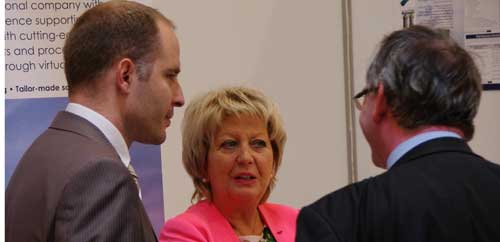
Dose measurement focused primarily on levels in food, in the evacuated zones and those directly affecting the evacuees. The main conclusions of the report, which Mr Weiss highlighted, are as follows:
Overall cancer rates will remain stable and no future evolution of doses is anticipated in both the local population and the stricken power plant’s workforce
Additional risk above normal values due to Fukushima is less than 0.1%
Nobody died from over exposure to radiation from Fukushima
Exposure levels among evacuees are only marginally higher than the normal background radiation levels in Japan.
For plant workers, only 2-3 cases of thyroid cancer risks in excess of the 70 baselines cases have been registered.
The health and environmental situation will be regularly reviewed
Remediation impact will be observed in order to study lifetime exposure levels, and will lead to the establishment of a case control study for children that will help accurately calculate thyroid cancer risks.
How many citizens are aware that major space exploration programmes have required the use of nuclear technology in order to conquer space? Without nuclear reactors on-board space craft cannot cover the vast distances of the cosmos. This question was one of the many considerations that emerged from a fascinating and thought-provoking exposé on nuclear’s role in the international space programme that was delivered by Fiona Rayment, of the UK’s National Nuclear Laboratory (NNL). Her presentation entitled: Nuclear technology to conquer space showed how nuclear technology has helped conquer space and push back the frontiers of human knowledge. Nuclear technology in space has already accumulated many decades of experience since 1961. The moon missions from Apollo 12 to 17, the Cassini Huygens Mission, the current missions to Mars and the future projected manned missions to Mars have all been achieved (or will be achieved) thanks to the application of nuclear technology to space exploration.
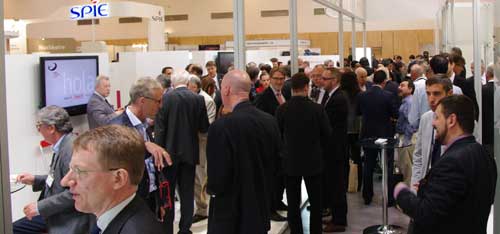
Naturally, the challenges are massive from both a technical and logistical perspective. The vast distances that need to be travelled to reach distant space objectives, the harmful effects of cosmic radiation and the generally hostile and unforgiving environment of outer space are eternal problems that cannot be underestimated.
Power and heat are essential requirements for ensuring space travel and there are three key technologies that must be used to achieve this objective - chemical, solar and nuclear technologies. Nuclear technology, more specifically the use of radio-isotope heaters (RHUs), a radio-isotope power system (RPS), and the construction of nuclear reactors and rockets, is proven and reliable. But it is also very expensive.
NNL is working on radioactive power systems. It is focusing in particular on which radio-isotope to use. Plutonium and americium provide good power systems - especially the latter, which is derived from the former (using the Purex system). The MEGAHIT project is another field of research being looked at. It relates to electric propulsion technology and is sponsored by the European Commission’s Framework Programme Seven (FP7) research initiative. It is being looked at as a potential technology for use in space travel.
In the future, Ms Rayment pointed out, radioisotope generators, batteries and the need to identify an appropriate mission for applying nuclear technology to space travel will provide much of the direction and impetus for efforts to use nuclear to reach out to the final frontiers of our universe…. and perhaps one day beyond?
(Editor-in-Chief)
http://www.euronuclear.org/e-news/e-news-45/TopFuel2015.htm


The TopFuel 2015 Programme Committee is calling for both oral and poster presentations in the following tracks:
Operation and experience
Transient Fuel Behaviour
Advances in designs, materials and manufacturing
Enhanced accident tolerance (ATF)
Modelling, analysis and methods
Mark your diaries and be a part of it! Upload your abstracts on www.topfuel2015.org before 12 December 2014.
Deadline for draft paper submission: 10 April 2015 Email ALL correspondence to topfuel2015@euronuclear.org . Your abstract contribution will be included in the Conference Proceedings that will be posted on the ENS website: www.euronuclear.org with reference number ISBN 78-92-95064-23-2. |
|
Organised in cooperation with: |
|||
|
|||
http://www.euronuclear.org/e-news/e-news-45/RRFM2015.htm


The RRFM 2015 Programme Committee is calling for both oral and poster presentations regarding
All key areas of the nuclear fuel cycle of research reactors
Utilisation of research reactors
Innovative methods in reactor physics and thermo-hydraulics
New research reactor projects
Research reactor operation and maintenance
Safety and security of research reactors
Decommissioning and dismantling of research reactors and waste management
Mark your diaries and be a part of it! Upload your abstracts on www.rrfm2015.org before 15 November 2014.
Authors should submit their abstract text in English through the Abstract Submission System on Reference number ISBN 978-92-95064-24-9 |
http://www.euronuclear.org/e-news/e-news-45/borssele.htm

During its annual refueling outage in June 2014, the Borssele reactor (the only commercial nuclear power plant in The Netherlands) was for the first time partially loaded with MOX fuel. This marks the completion of the “Fuel Diversification Project” that was publicly announced by EPZ, Borssele’s owner-operator, in May 2008. The end result will be that the Borssele reactor will have a fully-closed fuel cycle with the possibility of 40 per cent of its fuel being MOX.
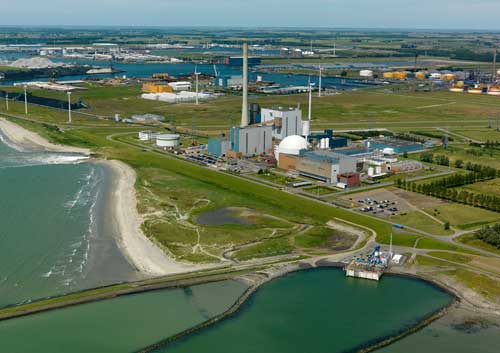
In previous years, EPZ continued its practice of fuel reprocessing until the final core, which is scheduled for unloading in 2034 when the reactor’s 60 years lifetime expires. In the past, the plutonium separated from Borssele fuel by Areva’s La Hague treatment plant had been used to fabricate MOX fuel for foreign reactors. In 2008, EPZ announced that it wanted to have the possibility of loading MOX into its Borssele reactor (called ‘fuel diversification’), and EPZ initiated a license application process. Because Borssele has been using recycled uranium for many years, this means that the fuel cycle, for the uranium as well as for plutonium, is completely closed.
The licensing procedure was a protracted one, challenged in court by some NGO’s. But in 2013, the license to load MOX in Borssele became irrevocable and MOX fabrication for Borssele was finally able to start. EPZ contracted Areva for the MOX fabrication at their MELOX plant in the south of France. The first MOX assemblies were delivered in December 2013 and the first 8 were loaded into the Borssele reactor in June 2014. These are the “pathfinder” assemblies required by the nuclear license. If these “pathfinders” perform well during the first fuel cycle, EPZ can continue to annually load 12 MOX assemblies when profitable until, in equilibrium, 48 out of 121 assemblies (40 per cent) are MOX. The balance of the reactor (60 per cent) is made of enriched natural uranium or enriched recycled uranium. After reaching its target burn-up, all used fuel (including the MOX) will be sent to La Hague for treatment.

The advantage of the closed fuel cycle is that after 60 years of reactor operations only one type of high-level waste (vitrified residues) is left to manage, and there is no plutonium or spent fuel. The vitrified residues are stored by the government-owned COVRA organization for at least 100 years prior to geological disposal in the Netherlands. This back-end solution is a well-established element of Dutch national policy. In November 2013, King Willem-Alexander of the Netherlands signed the Ratification Act concerning Dutch-French cooperation in fuel recycling, and this Act has passed through Parliament.
There is a catch, however. The final core of the Borssele reactor, in 2034, will also contain plutonium that will become available after treatment in La Hague, but which cannot be transferred to the Netherlands. As a solution, EPZ and Areva agreed on a “pre-cycling” scheme. The plutonium needed to fabricate the MOX for Borssele is presently “loaned” by Areva; in the future when EPZ’s plutonium is being reclaimed in La Hague, that plutonium will be transferred back to Areva as re-imbursement. The net result will be that EPZ will, in the end, have no plutonium left to manage.

http://www.euronuclear.org/e-news/e-news-45/smr.htm

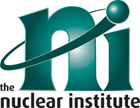
You can now register for the leading Nuclear Institute conference of 2014 that will address the questions and important issues around Small Modular Reactors (SMRs) in the UK, to take place at the Manchester Conference Centre on 25 September 2014.
Nuclear power plans in the UK may gain a new dimension with SMRs, a scalable, emissions-free power generation technology suitable for a range of applications and sites.
What role could SMRs play in the UK's energy mix?
What contribution could the UK make to this new industry?
Will the UK build SMRs - and could it build the first fleet?
What will it take to build the first SMR in the UK today?
Policymakers and industry leaders will present HMG Nuclear Innovation and Research Advisory Board's feasibility study on SMR, and examine paths forward for this important tool for global warming / GHG-emissions mitigation.
The implications for meeting Britain's decarbonisation commitments, for the grid, for planning and licencing, for British manufacturing, jobs, entrepreneurship and the innovation ecosystem will be discussed by leading experts, academia and industry pioneers.
Go to www.nuclearinst.com/NI-events to register online or to download a booking form.
http://www.euronuclear.org/e-news/e-news-45/sne-news.htm


A one-day Technical Session organised by the Spanish Nuclear Society (Sociedad Nuclear Española - SNE) took place on 24 April 2014. Approximately 60 people from the nuclear sector took part – an impressive turn-out. As in recent years, it was organised by the Technical Commission of SNE. The Technical Session was held at the Faculty of Mining Engineering at the Polytechnic University of Madrid. The title of the Technical Session was: Long-Term life management of nuclear power stations. As witnessed by the numbers of participants, and by the great interest that they showed in it, the session was a big success – in spite of an obvious information overload and the tight schedule. This endorsed the relevance of the chosen topics.
Registration for the 40th Annual Meeting, which will be held from 1 - 3 October 2014, in Valencia, is now open. All the relevant information about the meeting is available at: www.reunionanualsne.es. The technical programme includes two Plenary Sessions, a Special Session and two Monograph Sessions dedicated to the relevant current issues related to energy and associated issues. The participants in these sessions include high-ranking national and international experts in each relevant topic. The Plenary Sessions will focus on important current issues in the energy and nuclear sectors such as:
Energy storage: Current technology and advanced developments
The Chinese Nuclear Programme
The Special Session will focus on 40 years of the Spanish Nuclear Society
The Monograph Sessions will be dedicated to the following two topics:
Nuclear power plant design strength and new emergency management strategies
Techniques associated with the reduction of radioactive waste
The key components of the technical programme are the Technical Sessions and the “Learn more about...” courses, in which national and international experts present their work on specific projects and research studies, and detail the progress that has been made in different fields over the past year. Technical papers are presented in parallel oral sessions and poster sessions. The subjects of the papers cover a wide range of fields, such as fission, maintenance, R&D, communications, the legal aspects of nuclear power, medical applications, etc.
This year the “Learn more about...” courses will be on:
Grid stability
Energy reserves
Financing models for new nuclear projects
The meeting also includes activities aimed at informing and educating the general public, e.g. the Basic Course on Nuclear Science and Technology, which is organized by the SNE’s Nuclear Youth Committee and is open to students from the city and region, as well as to anyone else who wishes to learn more about nuclear energy and technology.
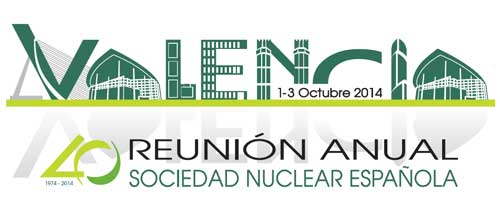
The Spanish Young Generation Nuclear network is actively engaged in promoting the education and training of students and young professionals through its Annual Seminar on Safety of Advanced Reactors at the Faculty of Industrial Engineering at the Polytechnic University of Madrid.
Nuclear España, the monthly magazine of the SNE that has been distributed since 1984, recently published issues 346 and 350, which are about the 39th Annual Meeting and the winter session entitled: Spanish Nuclear Power Plants in 2013: Experiences and perspectives (available in both English and Spanish).

The Spanish Nuclear Society recently organised a special ceremony to celebrate its 40th Anniversary. The event took place on 18 June 2014, with the participation of previous Boards of Directors, individual & collective members, institutional partners and special guests. A book has also been published to commemorate this event.
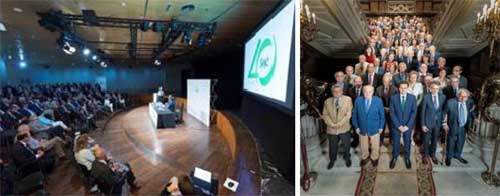
SNE has invited candidates to take part its annual awards for the best Masters and postgraduate theses related to nuclear technology. These awards are to be used exclusively to cover the winners’ academic registration costs up to a maximum amount of €3.000. There will be at least seven scholarships to be won. All relevant information is available on the website of SNE (www.sne.es)
The SNE Board of Directors has decided unanimously to create a new SNE award for a Doctoral Thesis in the nuclear field, and it will be announced officially in the fourth quarter of 2014.
The Spanish Nuclear Society announced the 2014 edition of the Projects and Master’s Award with content related to science and nuclear technology. The three finalist projects were publicly announced on May 15, 2014, and these projects will be presented at the 40th Annual Meeting in Valencia. The winner will be elected during the upcoming SNE Annual Meeting and awarded € 1,500 plus a commemorative.
http://www.euronuclear.org/e-news/e-news-45/Nuclear-Institute.htm


The Nuclear Institute (NI) is pleased to announce the opening of nominations from employers and training providers for our awards that recognise the achievements of nuclear professionals who are the future leaders of the UK nuclear industry.
As part of the Nuclear Institute's drive to promote Nuclear Professionalism centred around the Nuclear Delta, the NI has refreshed some of its annual awards and now welcomes submissions from across the nuclear industry for the following:
Jack Edwards Prize for Best Technician – an annual prize awarded by the NI for the Best Technician working today in the nuclear industry. Nominations are welcome from the employing company.
NI Young Apprentice/Technician Award – an annual prize awarded to the rising stars of the UK nuclear industry. Nominees will either have recently completed their apprenticeship or recently qualified as a new technician. The prize is aimed at personnel who display excellence and are seen as future leaders of the industry. Nominations are welcome from the training provider or employer responsible for the apprentice/technician.
NI Young Professionals Award – an annual prize awarded to the rising stars of the UK nuclear industry. It is aimed at personnel who are within the first 10 years of their nuclear career, who have already achieved success and who are seen as the future leaders of the industry. Nominations are welcome from the employing company.
In all cases, the proposed award winner will receive £250 in prize money, a signed NI commemorative certificate and free attendance of an NI Event of the winners choosing. The awards will be presented at the employer/training provider’s local prize giving ceremony or at the NI event.
Mark Lyons, Trustee and Chair of the Education & Training Committee at the Nuclear Institute, said: “In support of our promotion of Nuclear Professionalism (based upon the concept of the NI’s Nuclear Delta), the Nuclear Institute as the body for nuclear professionals across all disciplines and roles within the UK nuclear sector is aiming with these awards to help identify and enthuse the next generation of scientists and engineers from within the nuclear industry."
The entries must be received no later than 31 July 2014 and will be judged by the NI’s Education & Training Committee.
For further information please call the NI on 0203 475 4701, email admin@nuclearinst.com or take a look at our website on www.nuclearinst.com/NI-Awards
About the Nuclear Institute
The Nuclear Institute is the UK membership organisation for Nuclear Professionals, with nearly 2,000 members working in all areas of the nuclear sector. We maintain the standards of professionalism in the nuclear sector through our code of conduct and the Nuclear Delta. Of most importance to us is the education and training of nuclear professionals, as well as the understanding of the nuclear industry from the wider public. As a learned society we also act as the independent voice of the industry.
The institute was created on the 1st January 2009 from the merger of the British Nuclear Energy Society and the Institution of Nuclear Engineers, who between them have been serving the industry from the late 1950's, not very long after the industry first came into being.
http://www.euronuclear.org/e-news/e-news-45/slovenia.htm

Dr. Marko Čepin has been elected the new president of the Nuclear Society of Slovenia.
The Nuclear Society of Slovenia is comprised of around 300 members, mostly connected with scientific and educational activities. Its mission is to continue the development of nuclear science and technology in Slovenia.
The Annual Assembly of the Society was held in Ljubljana, on May 26, 2014. The most important activity of the Society in 2014 was identified as the organisation of the International Conference Nuclear Energy for New Europe 2014, which will take place in Portorož, Slovenia, from September 8-11, 2014 (www.nss.si/nene2014).
The elections for the new President also took place during the Annual Assembly. Dr. Čepin was elected for the period 2014-2018. He previously worked for 19 years as a researcher at the Jožef Stefan Institute before moving to the University of Ljubljana in 2009. Since then, he has been teaching at the Faculty of Electrical Engineering, Department of Power Systems and Devices. He is also Vice President of European Nuclear Society.
The Nuclear Society of Slovenia
http://www.euronuclear.org/e-news/e-news-45/hungary.htm

The 8th Nuclear Summer Camp for secondary school students was organised by the Hungarian Nuclear Society in July 2014. Teenagers arrived from several cities in Hungary to listen to presentations given by nuclear experts and teachers on nuclear technology and on nuclear physics and communications. The students carried out special nuclear measurements at the Eötvös Lóránd University, and visited the training reactor of the Budapest University of Technology and Economics. The Nuclear Summer Camp programme included visits to Paks Nuclear Power Plant and to the Museum of Nuclear Energy.
The lectures covered the following topics:
Nuclear basics
The life of Leó Szilárd
Electric energy production in Hungary
The basic components of nuclear power plants
Fusion reactors
VVER technology – history and perspectives
Cyber safety and uranium enrichment
The handling of radioactive wastes
Fuel for nuclear power plants
Thorium reactors
Nuclear techniques in medicine
Radon in the environment
Risk analysis
The summer camp was located in Göd, which is a small village by the Danube River that offers many possibilities for leisure activities.
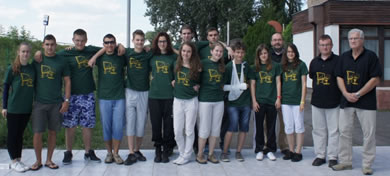

The Hungarian Nuclear Society
http://www.euronuclear.org/e-news/e-news-45/ygn-report.htm

The European Nuclear Conference (ENC) 2014 took place in Marseille, France, from 11-14 May 2014. The Welcome Reception, sponsored by GDF Suez, took place on the evening of the Sunday 11th at the Regards de Provence Museum on the city’s waterfront.
On Monday, the opening session began with the conference chair, Bernard Bigot, welcoming the participants. Around 400 delegates attended the conference, with a very strong presence from European countries, but with presenters also coming from countries including the USA, Brazil, Malaysia, India, Japan, China, and South Korea.
The opening panel featured speeches from Noel Camarcat, Director Executive Group Production and Engineering at EDF, and ENS President; Frank Deconinck, ENC 2014 Programme Committee Chairman, and Honorary ENS President; Milo Alani, Chairman of the ENS Young Generation Network and Donald Hoffman, President of the American Nuclear Society (ANS). Noel Camarcat’s speech was delivered on behalf of Hervé Machenaud, Director of Executive Group Production at EDF, who was unable to attend. In the speech Mr Machenaud discussed how the Young Generation Network was founded and underlined its importance for networking and collaboration between institutions. Frank Deconinck highlighted the main issues and topics covered by the conference programme. Milo Alani then discussed the work the ANS has done to engage the public and the young generation, and emphasised the need to get across the benefits of a nuclear power station to the local community when siting it. Donald Hoffman gave a welcome address on behalf of ANS.

Keynote speeches were then delivered by Noel Camarcat, and Osamu Motojima, Director General of ITER, who emphasised the international partnership involved in ITER’s construction and gave an update of progress on the ground.
This was followed by plenary sessions delivered by a range of key figures from government, industry, academia and international organisations. Agneta Rising, Director General of the World Nuclear Association (WNA) emphasised the need for nuclear new build and chaired a round table of experts including Arthur de Montalembert from AREVA, Nikolai Drozdov from Rosatom, Philippe Anglaret from the French Nuclear Suppliers Association, David Powell from GE Hitachi and David Boath from AMEC. The panel discussed the feasibility of financing and implementing a local supply chain for nuclear new build, and the importance of a skilled workforce.

Keith Parker from the UK’s Nuclear Industry Association (NIA) discussed the development of a supply chain for UK new build. Jorma Aurela from the Ministry of Employment and Economy, Finland, highlighted the challenges that the Finnish government faced in planning for new build, including local challenges finding sites reactors. Paul Rorive discussed GDF Suez’s involvement as an intelligent operator of nuclear plants in Belgium and their plans for involvement in new build in the UK. Zbigniew Kubacki from the Nuclear Energy Department in Poland discussed Poland’s decision to introduce nuclear power, placing this in the historical context of a previous attempt which was subsequently reversed.
After lunch, Michel Debes discussed the EDF nuclear fleet. Pal Efsing of KTH, Sweden’s Royal Institute of Technology, discussed the difficulties of guaranteeing the safety of an ageing fleet of reactors, which is relevant in many countries. Bozidar Krajnc discussed safety upgrades to Slovenia’s nuclear plant. Bjarne Noren discussed the World Association of Nuclear Operators’ role in strengthening nuclear safety, by demanding a high standard of safety from its members.
Monday finished with parallel sessions on new build, plant operations and nuclear technology in society. A workshop organised by the Young Generation Network was also scheduled, which covered the needs of different stakeholders for reactor new build, with emphasis on a country with no previous nuclear experience. The attendees had an opportunity to take part and discuss different stakeholder needs, which was an excellent chance for delegates both young and experienced to exchange ideas.
Tuesday morning kicked off with parallel sessions on new build, plant operations, coolant & fuel technology, severe accidents and fuel cycle. This was followed by a plenary session which initially focussed on medical applications. Wolfgang Weiss of UNSCEAR gave a talk on radiation exposure from Fukushima, and Fiona Rayment of the UK’s National Nuclear Laboratory (NNL) gave a talk on use of nuclear decay and nuclear reactors as power sources for space applications. This was followed by a poster session which gave industry, government and academic delegates from a wide range of countries chance to present their work. After lunch, their were further parallel sessions covering a wide range of topics including materials fusion, fuel fabrication, life science applications, education & training, core analysis, decommissioning, severe accidents, fuel cycle and new build.

On the Tuesday night, the conference dinner took place at the Palace Pharo on the Marseille waterfront, offering a panoramic view of the beautiful port and marinas. This was an excellent opportunity for delegates to network, chat and catch up with old acquaintances.
Wednesday morning began bright and early with talks on a diverse range of topics, divided into parallel sessions on safety review, waste treatment, non-power applications and fuel cycle scenarios. After a brief coffee break, the final set of parallel sessions covered used fuel, reactor simulation, plant operations and education & training.
In the final plenary session of the conference, Christophe Behar, Director of the Nuclear Energy Division of CEA (France’s Commissariat for Atomic and Alternative Energy), gave an outline of the challenges facing nuclear fission, with emphasis on a future nuclear fuel cycle which was sustainable from the point of view of uranium utilisation and waste management. Ferry Roelofs, of the Dutch utility NRG, then gave an overview of the workforce demands for nuclear new build, in particular for construction of new plants to replace the current fleet as it reaches the end of its life. Finally, Ron Cameron of the OECD Nuclear Energy Agency gave a talk on the economics of the back end of the nuclear fuel cycle.
In the closing session, Milo Alani gave the audience a breakdown of the demographics of the conference dinner attendees. The average age of attendees was just under 50 and on average around 20 years of experience in the nuclear industry. Just over 20% of the attendees were female, and these tended to be slightly younger than average, suggesting that this percentage could rise in the future. Ingeborg Hagelocher, President of the ENS High Scientific Council, and Noel Camarcat, the ENS President, thanked the delegates for attending and closed the conference.

Ben Lindley
Engineering Department, University of Cambridge, UK
http://www.euronuclear.org/e-news/e-news-45/nucnet-interview.htm

During the recent European Nuclear Conference, in Marseille, NucNet interviewed Milo Alani, the Chairman of the European Young Generation Network. Here is a transcript of that interview (Editor-in-Chief).
NucNet: Milo Alani, chairman of the European Young Generation Network, says the nuclear industry has been too conservative for too long and needs to ‘adapt to new conditions’.
NucNet: As chairman of the European YGN, what is your view of the nuclear energy sector today?
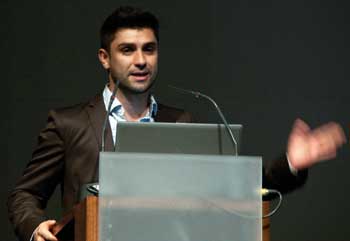 |
MA: Sometimes at the YGN we feel frustrated because the norms and values of the industry in general collide with those of the young generation. This is due to the generation gap which exists in our sector. The businesses have tried to overcome that gap and to close it, but I think we have not been successful. |
It comes down to the nature of the nuclear sector – it is conservative and highly criticised, which leads to businesses trying to shield themselves from the outside world. This has made us somewhat less creative. We do not tend to think outside the box and sometimes I feel like we are stuck in an age that is not aligned with today’s values.
NucNet: What is the solution to these problems?
MA: In the past two or three years, there has been increased interest from businesses and working groups in knowing what it takes to recruit people to the sector from our, younger, age-group, and also to keep them. When the young generation gets invited to speak at working groups, I always say we should think about the situation from a wider perspective. The decision-makers in our business belong to the generation of our parents. They tell us that we should sit down in the office and gain 20-30 years of experience and only then will they listen to what we have to say. I am exaggerating, but it illustrates my point. This creates a friction between my generation’s values and those of the decision-making generation.
NucNet: What do you think about education and training initiatives by international organisations aimed at bridging the gap between the generations?
MA: I think these programmes are great. The problem is that, for example, the International Atomic Energy Agency is an organisation and academia is an interface point, but these two are usually not aligned with the industry. The industry is everyday life; it is where you go to work. The IAEA, academia and policy-making are another level and this level is not aligned to the needs of the industry. Such organisations can have programmes and initiatives, but they should align themselves.
NucNet: Do you think the young generation is often forgotten or overlooked?
MA: Yes. This goes hand-in-hand with the industry’s situation. If you rewind to 40 or 50 years, the nuclear industry was sexy, new and hip. It was also protected by governments. The people who were trained and hired at the time did not have to think about market share, competition or surviving in a market environment. All public relations, human resources and public opinion were dealt with by the government. The only thing these people had to concentrate on was doing their work.
Suddenly, after the Chernobyl accident, most of Europe and the West deregulated their energy markets. Most states sold their shares in the nuclear energy business and all these people who had been protected had to act in order to survive. The young generation is often forgotten because of this situation. A company acting in today’s world has quarterly economic and financial reports which create short-term thinking. Without long-term thinking, for the next 40 or 60 years, the young generation becomes overlooked.
If you look at other sectors, like the motor industry, businesses have competed for many years and have adapted to the market. The nuclear sector is still adapting to these new conditions, but we will get there in the end. In the meantime, we are taking heavy blows because it is a tough transition. The nuclear sector is competing with fossil fuel companies which have had to compete in the market for a long time. This process takes time.
NucNet: What are the prospects for a young person studying nuclear engineering at the moment?
MA: The prospects are great. There are many job opportunities. The problem is not hiring people, but keeping them. We usually lose people after three to five years. This happens because young people lose interest. They cannot see the next steps in their career because there is no clear career path. Also, some people become frustrated with the friction I mentioned earlier – the conservative mentality and not being open to the public. I would be proud my company sponsored, for example, a football team. But this does not happen because companies in the nuclear sector do not tend to speak out beyond what they do. This makes them look like they are not proud of what they do.
NucNet: As young generation president, what is the main challenge you have to deal with?
MA: A few years ago the young generation had an identity crisis. We needed to define exactly what we are. Are we lobbyists, or are we promoters? We were not sure what kind of message we wanted to send out. At the time, I thought to myself that we represent a group and we should speak up about what this group wants. So, we listed topics which are important to us like increasing the number of women in the nuclear industry or increasing the number of young people in important decision-making positions. Now we are going to take another step and challenge industry to be more transparent.
There was a Nuclear Industry Summit in March in Amsterdam and when they took the picture of participants I could count only four or five women. The industry was proud of that picture, while I would not be proud of it. Nevertheless, I understand that engineering in general in the world of 50 years ago was not appealing to women. Today there are many who consider a career in the sector. We should take these women in.
NucNet: How is the European Nuclear Society supporting your efforts?
MA: The European YGN, as part of ENS, receives funds for its operations from ENS. We have also very recently negotiated to have a young person sit on the ENS High Scientific Council and have our own web page separate from that of ENS. We will have a blog on our new web page through which we want to inform the public about nuclear energy in a very simple language. For example, the president of the High Scientific Council supports the idea of having a list of myths about nuclear energy and we will allow the Council to explain them in simple terms. It is not sufficient to say that radiation is dangerous. This needs to be explained so we can build transparency and credibility.
We are also active of Twitter, LinkedIn and Facebook. We are doing a lot which is more appealing to the younger generation. It is very simple – if you can stand for what you do, it is going to be easy to explain it to your neighbour. It is easier to be part of the sector if you believe in what you are doing.
NucNet: What is the theme of the International Youth Nuclear Congress (IYNC) 2014?
MA: Usually, the themes and topics discussed at the IYNC are ones which are important for the Young Generation. They address the future of nuclear. This year, we will talk about operation and maintenance, Generation III reactors, small modular reactors and fusion. We will also talk about education and training, and human resources – as always during our conferences we will discuss the future of the sector. When it comes to the YGN, we always think about the future.
Background
Milo Alani has been chairman of the European Young Generation Network since 2013. He graduated with an MSc in applied mathematics in Sweden and works for Westinghouse Electric Sweden.
The European Young Generation Network was founded in 1994 in Sweden and became part of the European Nuclear Society in 1995. The YGN includes 24 countries.
The International Youth Nuclear Congress will be held in Burgos, Spain, from 6 to 12 July 2014. There will be six technical tours, including visits to the Santa María de Garoña nuclear power plant and control room simulators at Tecnatom, Madrid. For details and registration: www.iync.org.
Follow NucNet on Twitter @nucnetnews
Find us on Facebook: facebook.com/nucnet
To contact the editor responsible for this story: Lubomir Mitev at lubomir.mitev@nucnet.org
http://www.euronuclear.org/e-news/e-news-45/physics-on-wheels.htm

The Physics on Wheels project was launched in order to present to graduates from the Slovak University of Technology the multiple application possibilities of nuclear power and physical engineering. The aim was to demonstrate that the connection between physics and technology can offer something extraordinary to young people and open up possibilities for personal development both at home and abroad. This was already the third time that selected students were able, thanks to the project, to participate in the various lectures and take part in the interesting excursions to our laboratories at the Institute of Nuclear and Physical Engineering and abroad. On this occasion we visited the DESY (Deutsches Elektronen-Synchrotron) physics laboratories and the XFEL (X-ray Free Electron Lasers) laboratory in Hamburg. These laboratories are among the world’s best accelerator centres. We also visited the ÚJV Řež (Centre of Science and Research).
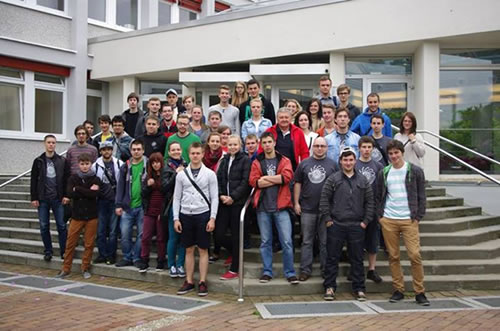
Everything began on 25 May, at 5:30 p.m., at the Faculty of Electrical Engineering and Information Technology, in Bratislava. The participants got together there in order to meet each other and to establish new contacts with other students from different high schools and our faculty.
On 26 May, a series of lectures were given at our faculty under the name: Physics: The dark world. Our teaching staff prepared three interesting presentations entitled: How Higson came to his mass (by Professor Krempaský), Physics between heaven and earth (by Associate Professor Valko) and Electron Accelerators in Slovakia and their application (by Associate Professor Šagátová). All the presentations are available online at: http://147.175.126.50/aktuality-popularizacne_prednasky.php.
In the afternoon, the students received detailed information about study possibilities in the fields of nuclear power and physical engineering at the Institute of Nuclear and Physical Engineering. Afterwards, an exhibition of the work carried out at our laboratories gave students an opportunity to get a glance of the research done at our Institute. Late at night we headed off on the long journey to Hamburg.
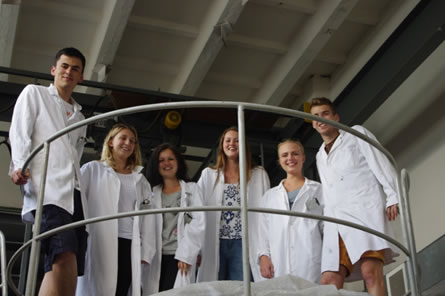
On 28 May, we visited the DESY accelerator centre in Hamburg. DESY stands for Deutsches Elektronen-Synchrotron. The research done at this institute is really extensive. Local researchers are investigating the fundamental particles upon which our world is built. They are also interested in research into new materials and new mechanisms for treating sick patients. DESY is one of the largest research centres in Germany. The main objective of the institute is to perform basic research, from which we can obtain new knowledge and learn new approaches in various fields.
The opening presentation set out clearly the main vision of this centre. Subsequently, we had a guided tour of the relevant facilities. We were able to see part of PETRA III, the largest storage-ring in operation, which produces X-ray radiation. Its total length is 2.3 km and the experimental hall itself is 300 m long. All the experiments are performed in this hall. There are 14 beam-lines and 30 metering stations housed in the facility. PETRA III generates X-ray radiation, which is used to examine very small specimens from medicine to nanotechnologies. After visiting the PETRA III experimental hall we went to have a look at the HERA shutdown accelerator. It used to be the largest storage-ring in DESY, and in the whole of Germany too. As the only one of its kind in the world, it was able to accelerate two particle types - protons and electrons, which collided after acceleration. The fact that this accelerator had already been shut down was a great advantage for our excursion, because it provided us with an opportunity to investigate individual accelerator parts, and even to literally touch them. The total tunnel length is 6.3 km and it is placed deep underground. The facility was shutdown in 2007 after 15 years of operation, and the acquired data is still being processed.
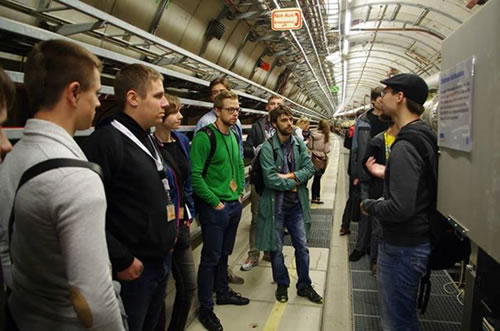
On the last day, 30 May, we visited the Řež Research Centre near Prague, where the history of nuclear power in the former Czechoslovakia began. It was necessary to first undergo a personal security check at the entrance, a procedure that is required at all facilities that handle nuclear materials. After a short introduction about the Řež Research Centre we were split into three groups in order to visit the three most interesting places in the area – the LR-0 research reactors, the LVR-15 reactor and the experimental loops. Our tour started with the zero-power LR-0, which serves mainly as an experimental reactor for measuring the neutron-physical characteristics of light water reactors. The original reactor was built in the 1960’s and was based on heavy water. This reactor was necessary for the first KS-150 power reactor in Czechoslovakia, which was under construction at Jaslovské Bohunice site at the time. In the 1980’s it was rebuilt as today’s light-water reactor, satisfying VVER-440 and VVER-1000 needs. Our guide at LR-0 explained all the interesting things that go on in the control room and in the reactor hall. He also described the reactors’ functions, regulation options, and various experiments that are carried out there. Students could see with their own eyes how a detector records natural radiation from the pitchblende ore and how easy it is to shield people from this radiation.
After the LR-0 we moved on to the experimental hall, where two loop systems are located. One system was used for the circulation of supercritical water (SCWL – SuperCritical Water Loop) and the second one was for high-temperature helium circulation (HTHL – High Temperature Helium Loop). A detailed explanation of how these loops work and what kind of experiments are carried out followed. We could observe both systems at close range while passing through to their shared control room. Both loops are related to research into Generation IV nuclear reactors, which are designed to use helium (ALLEGRO, HTR) or super-critical water (SCWR) as the coolant. We learned that the loops are experiencing ‘teething problems’ and that the research there is only just beginning.
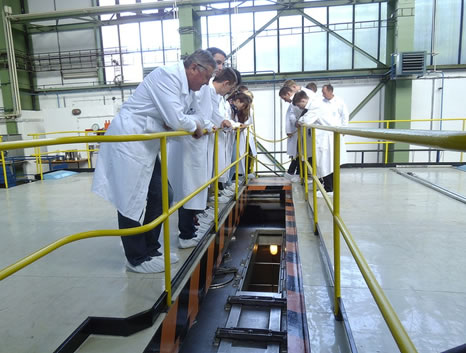
The final visit was to the LVR-15 research reactor, which was the first nuclear research reactor in Czechoslovakia. It was inaugurated as a VVR-S reactor in 1957, with a thermal output of 2 MW, and it operated successfully in this state until 1987, when it was rebuilt as the LVR-15 reactor with thermal output of 15 MW. This reactor is used today for materials research, the production of radiopharmaceuticals and other purposes. To enter this reactor was not as easy as it was for the LR-0 visit, where only coats and shoe covers were needed. Instead, if we wanted to enter the LVR-15 we had to pass through a metal detector and all of us had to wear a protective coat, helmet, shoe covers. We also had to carry a personal dosimeter attached to us. With these requirements fulfilled we were able to enter the controlled area. We visited the reactor control room, where we were given a detailed explanation of the functions of the control panels and afterwards moved to the reactor hall. We walked around the reactor deck and saw various experiments that take place in channels that use neutron radiation. The greatest experience for the students was the chance to see Cherenkov radiation with their own eyes in the spent fuel pool. At the end of our visit a final inspection by a whole body detector was necessary to dismiss the possibility of any contamination.
After this final visit we went home to Bratislava. We believe that all participants in the Physics on Wheels Project received new and fascinating information during the one week trip. And we also hope that the visit was a motivation for the students to study more in this technical field and to focus on nuclear energy or physical engineering.
Patrik Novák, Stanislav Pecko, Amine Bouhaddane
The authors are PhD students from Institute of Nuclear and Physical Engineering at Slovak University of Technology, in Bratislava.
http://www.euronuclear.org/e-news/e-news-45/sck-cen.htm

For years the Belgian Nuclear Research Centre (SCK•CEN) has been regarded as a pioneer of international research into the effects of exposure to low doses of ionising radiation. In Belgium, medical applications - in particular imaging, but also radiotherapy - are responsible for more than 95 % of the exposure to non-natural sources of radiation. Research into the effects of this focuses, amongst other things, on the most sensitive of lives - unborn babies. The foetus can be exposed to radiation either directly or indirectly in radiotherapy or radiological diagnosis. There are indications that the dose used in therapy may have consequences for the foetus, including the development of cancer or delayed development of the brain. Regarding adults, SCK-CEN also focuses on cardiovascular diseases, e.g. after breast cancer irradiation.
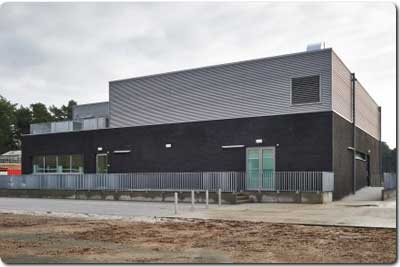
Laboratory research at the cellular and molecular level has resulted in significant scientific advances, but in order to interpret the meaning of the effects that are observed in the short term, tests in mice remain of vital importance. “This is the only way in which we can conclusively prove what the consequences are for human beings in the longer term, and focus on finding solutions to reduce or prevent this impact”, explains Hans Vanmarcke, Head of SCK-CEN’s Molecular and Cellular Biology Expert Group. “Mice are best suited for this purpose because they are 95 % genetically identical to human beings, and the embryo develops very quickly.”
Until recently, SCK-CEN used test mice that were made available by the Flemish Institute for Technological Research (VITO). The latter doesn't need this infrastructure anymore and thus closed its test animal facility. SCK-CEN anticipated this problem by building an animal facility that complies with the strictest requirements with regards to animal welfare and hygiene.
The building represents an investment in excess of 3 million Euros, and is equipped with state-of-the-art technology. There are access locks for animals, as well as carers and materials to protect the mice from external influences. An advanced climate control system with individual ventilation for each cage is used, and special materials allow for thorough cleaning and disinfection. Attention was also paid to the minimisation of stress. For example, day, night and sundown conditions are realistically simulated, and appropriate background music is played to the mice.
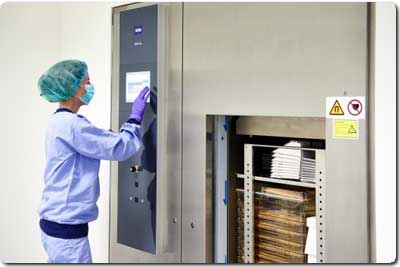
According to Sarah Baatout, Head of the Radiobiology Unit of SCK-CEN, the justification for this is twofold: “these investments in animal welfare and optimal hygiene not only benefit the mice’s quality of life, but also the quality of our scientific research.”
Thanks to the careful selection of only the mice that are very likely to develop the particular disorder that is being investigated, the number of animals has been significantly reduced over the years. The new animal facility and the very strict monitoring of the animal tests by an ethical commission enables the SCK-CEN researchers to work in the best possible conditions for both man and mouse. In fact, SCK-CEN endorses and enforces the new Royal Decree on animal studies in both letter and spirit - a Decree in which the strict rules for the use of laboratory animals and the welfare of the animals are of paramount importance. The basic principles adhered to can be summarised as by the three r’s;
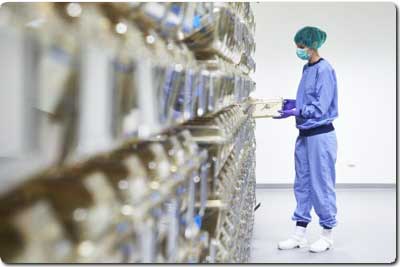
http://www.euronuclear.org/e-news/e-news-45/linn.htm


HT 1600 Special
Linn High Therm, leading manufacturer of industrial and lab furnaces since 1969, presents:
High quality high temperature furnaces for universal heat treatment applications, graphitization, sintering, vacuum brazing e. g. in glass- and ceramic industry, nuclear industry, metal industry, R&D. Fiber- or graphite felt insulation. Vacuum tight furnace chamber with rotary vane pump, roots pump or turbo-molecular pump up to 5 x 10-4 mbar.
Useful volume: up to 52 l, Tmax: 2100 °C.
Protective gases: forming gas, nitrogen, argon.
Comprehensive Options allow an universal utilization: also for H2-operation, gas feeding- and burn-off device, safety package, vacuum pump systems, partial pressure control, condensate trap, dew point measuring device, multi-zone-control, heating elements: graphite, Kanthal-Super, molybdenum, gas re-cooling, circulation cooling unit and emergency water supply, viscometer.

http://www.euronuclear.org/e-news/e-news-45/euro-space-center.htm

Simulation of a space mission, discovering the world of astronomy, building a rocket: every year, the ESC plays host in Redu to almost 30,000 young people from the four corners of the world who want to set off on a trip to the stars. This year, Belgium's discovery centre, the only one of its kind in Europe, decided to focus the telescope on our ‘blue planet’ and explore its biodiversity.
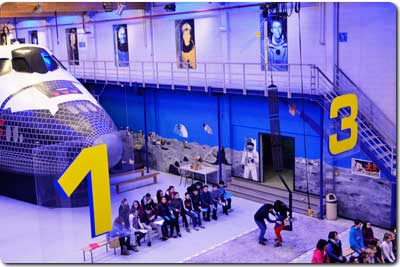
The Earth Camp is intended to offer young people between the ages of 10 and 18 the chance to have fun on their summer holidays while learning about satellites, GPS, the world's ecosystems and photosynthesis. And, to lend a helping hand to extra-terrestrials in difficulty on one of Saturn's moons, budding scientists will also have to busy themselves with creating artificial ecosystems to help them survive long space missions. This module is based on the MELiSSA project, and was devised by the Microbiology team at the Belgian Nuclear Research Centre and the European Space Agency (ESA).
To come up with a solution for providing food and drink during long manned space missions to Mars, for example, the MELiSSA project developed a unique recycling system to produce oxygen and food, and purify water too. The project, which has already been presented at the ESC's permanent space food exhibition, will be explained to young people in a ‘discovery experience’ that focuses on spirulin, which has been developed by SCK•CEN microbiologists.
"It's always a pleasure to work with such a dynamic and passionate research team", enthused Jean-Marcel Thomas, Director of the Euro Space Centre. "This isn't our first or last project with SCK•CEN. So we're keen to pass on our knowledge to children and instil an interest in science."
For more info on Euro Space Centre activities visit: www.eurospacecenter.be
http://www.euronuclear.org/e-news/e-news-45/atucha-II.htm

Having achieved first criticality, the Argentine reactor Atucha II is poised to become Argentina’s third reactor. This new pressurised heavy water reactor (PHWR) must pass a series of tests before it is ready for commercial use. As the project’s special partner, SCK•CEN would like to heartily congratulate the teams of Argentine experts with whom it has worked since the very beginning.
Recognised worldwide for its expertise in the testing of materials in nuclear power plants, both in Belgium and abroad, SCK•CEN was originally approached by Argentina in 2002. Upon the request of the operator NA-SA and ARN, the Argentine safety authority, the Centre began irradiating a series of samples and conducting studies for the Atucha I reactor, thus justifying the vessel’s safety margins beyond an operational lifetime of forty years.
This Belg-Argentinian scientific collaboration didn’t stop there. Within the framework of the Atucha II monitoring programme, SCK•CEN carried out a feasibility study and compiled a safety report for the Argentine authorities. In July 2010, Belgian experts went over there to install sample capsules around the inner wall of the reactor vessel using a robotic arm. Following this technological feat, SCK•CEN continued its consultancy work carryinh out various studies and providing services for the Atucha I and II reactors.
http://www.euronuclear.org/e-news/e-news-45/l3-mapps.htm

MONTREAL, June 12, 2014 – L-3 MAPPS announced today that it has added PPL Susquehanna LLC as a new customer for its leading-edge power plant simulation capabilities. Using its robust Orchid® simulation environment, L-3 MAPPS will replace the computing environment and plant models for the Susquehanna Unit 1 full scope simulator. Work is underway and the upgraded simulator is targeted to be in service by the third quarter of 2016.
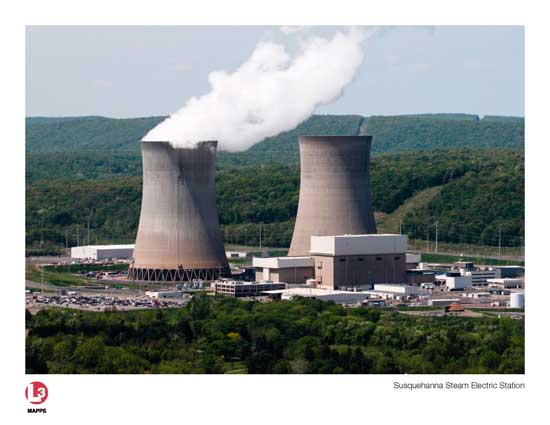
“The selection process for this major upgrade effort was very rigorous and we are honored that PPL chose our premium Orchid solution,” said Michael Chatlani, vice president of marketing & sales for L-3 MAPPS. “We are committed to working closely with PPL throughout the execution phase to deliver a best-in-class simulator that will meet PPL’s requirements well into the future.”
PPL was seeking the most robust simulation environment, most credible plant models and best-developed simulator configuration management system to get to the next level of operator training excellence. L-3 MAPPS demonstrated its technical depth and understanding of PPL’s simulator needs, which resulted in this award.
The new Susquehanna Unit 1 simulator will use L-3’s state-of-the-art graphical simulation PC/Windows-based tools for the plant models and instructor station. The entire Unit 1 power plant will be simulated in the Orchid simulation environment, including L-3’s Comet Plus™ reactor model, ANTHEM™ steam supply system model, balance of plant systems, electrical systems and I&C systems.
The simulator will also be equipped with new 2-D and 3-D animated, interactive visualizations of the reactor vessel, containment building and spent fuel pool to provide operators with a real-time understanding of the plant’s behavior during normal and abnormal operations and during severe accidents. The 2-D graphics will be enabled with L-3’s Orchid Control System, and 3-D visuals will be powered by Bridgeworks© from TriLink Systems.
PPL Susquehanna LLC is a subsidiary of PPL Generation LLC, which is a subsidiary of PPL Corporation. PPL Susquehanna owns 90 percent of the Susquehanna Steam Electric Station (SSES) and operates it. Allegheny Electric Cooperative Inc., based in Harrisburg, Pa., owns 10 percent. SSES, located in Salem Township, Luzerne County, Pa., is made up of two General Electric boiling water reactors capable of generating more than 2,600 megawatts. Unit 1 began commercial operation in June 1983 and Unit 2 in February 1985.
PPL Corporation (NYSE: PPL), headquartered in Allentown, Pa., is one of the largest companies in the U.S. utility sector with 2013 revenues of $12 billion. The PPL family of companies delivers electricity and natural gas to approximately 10 million customers in the United States and the United Kingdom, owns more than 18,000 megawatts of generating capacity in the United States and sells energy in key U.S. markets.
L-3 MAPPS has over 30 years of experience in pioneering technological advances in the marine automation field and over 40 years of experience in delivering high-fidelity power plant simulation to leading utilities worldwide. In addition, the company has more than four decades of expertise in supplying plant computer systems for Canadian heavy water reactors. L-3 MAPPS also provides targeted controls and simulation solutions to the space sector. To learn more about L-3 MAPPS, please visit the company’s website at www.L-3com.com/MAPPS.
Headquartered in New York City, L-3 employs approximately 48,000 people worldwide and is a prime contractor in aerospace systems and national security solutions. L-3 is also a leading provider of a broad range of communication and electronic systems and products used on military and commercial platforms. The company reported 2013 sales of $12.6 billion. To learn more about L-3, please visit the company’s website at www.L-3com.com.
Safe Harbor Statement Under the Private Securities Litigation Reform Act of 1995
Except for historical information contained herein, the matters set forth in this news release are forward-looking statements. Statements that are predictive in nature, that depend upon or refer to events or conditions or that include words such as “expects,” “anticipates,” “intends,” “plans,” “believes,” “estimates,” “will,” “could” and similar expressions are forward-looking statements. The forward-looking statements set forth above involve a number of risks and uncertainties that could cause actual results to differ materially from any such statement, including the risks and uncertainties discussed in the company’s Safe Harbor Compliance Statement for Forward-Looking Statements included in the company’s recent filings, including Forms 10-K and 10-Q, with the Securities and Exchange Commission. The forward-looking statements speak only as of the date made, and the company undertakes no obligation to update these forward-looking statements.
# # #
Bridgeworks is a trademark of Bridgeborn, Inc.
Orchid, Comet Plus and ANTHEM are trademarks of L-3 Communications MAPPS Inc. All other products are trademarks of their respective companies.
http://www.euronuclear.org/e-news/e-news-45/icond.htm
In the next 10 years over 100 nuclear power plants (NPPs) will be shut down worldwide. In Germany eight NPPs were unexpectedly shut down due to political decisions taken in the aftermath of the Fukushima Daiichi accident. The remaining nine currently operating NPPs will be out of operation by the year 2022. In total, over 36 billion Euros worth of accruals were accumulated for the decommissioning of German reactors. In the future there will be a critical time period reached when more than 35 nuclear facilities will be decommissioned in parallel, in Germany alone. To meet this challenging task there is a need for competent service providers and experts.
The 3rd International Conference on Nuclear Decommissioning (ICOND) provides a platform for professional exchange among stakeholders. It focuses on various decommissioning strategies, as well as on project management. Participants are decision-makers, key personnel, managers of the electric supply companies and regulatory authorities, as well as managing directors from the nuclear industry. Over 350 people are expected to attend the conference. National and international experts will present their best practice solutions and strategies.
ICOND takes place from the 28 - 30 October 2014 in Essen (Germany). Especially for international guests a Pre-Conference Workshop will take place on 27 October. Its aim is to introduce and discuss the status and framework of decommissioning in Germany, as well as to review decommissioning technologies.
The conference is complemented by a trade fair. Exhibitors include AMEC, TÜV Rheinland Industry Service, ORTEC, NUKEM Technologies, Gradel and many more. If you are interested in booking an exhibition booth please contact:
Ms. Inez Kreiten kreiten@nuclear-training.de
For the latest programme, please visit: www.icond.de
http://www.euronuclear.org/e-news/e-news-45/ecvet.htm


We have the pleasure announce the 3rd ECVET Customised Seminar for the nuclear energy sector (NES), which will take place in Rome on 12th – 14th November 2014.
The Seminar has the objective of assisting national nuclear E&T networks in setting up a Pilot project on European Credit system for Vocational Education and Training (ECVET).
A full description of the call is available at the EHRO-N website.
If you are interested to participate representing a national nuclear E&T network, fill in the request for participation form and send it to JRC-IET-ECVET@ec.europa.eu before 15 July 2014.
http://www.euronuclear.org/e-news/e-news-45/other-conferences.htm
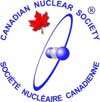
24 - 28 August 2014
Vancouver, Canada
more

1 - 4 September 2014
Paris, France
more

10 - 12 September 2014
London, United Kingdom
more

14 - 17 September 2014
Sendai, Japan
more

Contribution of Materials Investigations and Operating Experience to LWRs’ Safety, Performance and Reliability
14 - 18 September 2014
Avignon, Popes’ Palace, France
more

23 - 26 September 2014
Chiflica Palace Resort and Spa, Bulgaria
more

25 September 2014
Manchester Conference Centre, Manchester, United Kingdom
more
![]()
28 September - 3 October 2014
Kyoto, Japan
more

13 - 16 October 2014
France
more
![]()
26 - 31 October 2014
Sapporo, Japan
more

VI International Forum “ATOMEX 2014”
29 - 31 October 2014 in
Moscow, Russia
more
http://www.euronuclear.org/e-news/e-news-45/Member-Societies.htm

| Austrian
Nuclear Society http://www.oektg.at |
Belgian
Nuclear Society http://www.bnsorg.be |
| Bulgarian
Nuclear Society http://www.bgns.bg |
Croatian
Nuclear Society http://www.nuklearno-drustvo.hr |
| Czech Nuclear Society http://www.csvts.cz/cns |
Finnish
Nuclear Society http://www.ats-fns.fi |
| French
Nuclear Energy Society (SFEN) http://www.sfen.org |
German
Nuclear Society (KTG) http://www.ktg.org |
| Hungarian
Nuclear Society http://www.nuklearis.hu |
The
Israel Nuclear Society E-mail: meins@tx.technion.ac.il |
| Italian
Nuclear Association http://www.assonucleare.it E-mailt: info@assonucleare.it |
Lithuanian
Nuclear Energy Association http://www.lbea.lt |
| Netherlands Nuclear Society http://www.kerntechniek.nl |
The Nuclear Institute http://www.nuclearinst.com |
| Nuclear
Society of Russia E-mail: agagarin@kiae.ru membership on hold |
Nuclear
Society of Serbia http://nss.vin.bg.ac.yu/ |
| Nuclear
Society of Slovenia http://www.djs.si/ |
Polish
Nuclear Society http://www.nuclear.pl |
| Romanian
Nuclear Energy Association (AREN) http://www.aren.ro |
Slovak
Nuclear Society http://www.snus.sk |
| Spanish
Nuclear Society http://www.sne.es |
Swedish
Nuclear Society http://www.karnteknik.se |
| Swiss
Nuclear Society http://www.sns-online.ch |
http://www.euronuclear.org/e-news/e-news-45/Corporate-Members.htm
Links to ENS Corporate Members |
| Aachen Institute for Nuclear Training GmbH link |
AF-Colenco Ltd., Nuclear Technology
Department link |
| Alpiq Ltd link |
Alpiq Suisse Ltd. link |
| Andritz AG link |
Ansaldo Nucleare S.p.A link |
| AREVA NP GmbH E-mail: unternehmenskommunikation @areva.com link |
Atomic Energy Council (AEC) link |
| Atomic Energy of Canada Limited (AECL) link |
Atomexpo LLC link |
| Atomtex SPE link |
Axpo AG link |
| BKW FMB Energie AG link |
Chilean Nuclear Energy Commisssion link |
| Electrabel, Generation Department link |
NV Elektriciteits-Produktiemaatschappij
Zuid-Nederland EPZ link |
| Electricité de France (EDF), Communication Division link |
Euro Nuclear Services BV E-mail: ens@unitech.ws link |
| E.O.N Kernkraft GmbH link |
ENUSA Industrias Avanzadas SA link |
| EXCEL Services Corporation link |
GE Nuclear Energy peter.wells@gene.ge.com |
| IEA of Japan Co. Ltd link |
Kernkraftwerk Gösgen-Däniken
AG link |
| Kernkraftwerk Leibstadt AG (KKL), link |
L-3 Communications MAPPS Inc. link |
| Linn High Therm GmbH link |
Elektroinstitut Milan Vidmar E-mail: mladen.iglic@eimv.si |
| NRG Arnhem link |
NRG Petten link |
| NUKEM Technologies GmbH link |
ONET TECHNOLOGIES link |
| MVM Paks Nuclear Power Plant Ltd link |
Paul Scherrer Institute link |
| Polimaster Ltd link |
Saphymo GmbH link and link |
| Siempelkamp Nukleartechnik
GmbH E-mail: wolfgang.steinwarz@ siempelkamp.com link |
SKB (Swedish Nuclear Fuel and Waste Management
Company) E-mail: info@skb.se link |
| Studiecentrum voor Kernenergie, Centre d’Etude
de l’Energie Nucléaire SCK/CEN link |
Synatom E-mail: mailmaster@synatom.com |
| Taiwan Power Company (Taipower) link |
Taiwan Atomic Energy Council (AEC) link |
| Teollisuuden Voima Oyj / Industrial Power
Company Ltd (TVO) link |
Tractebel Engineering S. A. link |
| UNESA E-mail: nuclear@unesa.es link |
Urenco Limited link |
| Vattenfall AB link |
VNS – Vinçotte Nuclear Safety link |
| VTT Nuclear link |
Westinghouse Electric Company link |
| World Association of Nuclear Operators
(WANO), link |
http://www.euronuclear.org/e-news/e-news-45/editorial.htm

Editorial Staff:
Mark O’Donovan, Editor-in-Chief
Contributors to this Issue:
Milo Alani (YGN, Sweden)
Amine Bouhaddane (Slovak University of Technology, Slovakia)
Noel Carmarcat (ENS)
Kirsten Epskamp (ENS)
Ben Lindley (YGN, UK)
Monique Linger (EPZ, Netherlands)
Lubomir Mitev (NucNet)
Patrik Novák (Slovak University of Technology, Slovakia)
Stanislav Pecko (Slovak University of Technology, Slovakia)
Mark O’Donovan (ENS)
Realisation:
Marion Brünglinghaus
Avenue des Arts 56, BE-1000 Brussels
Phone +32 2 505 30 50 - Fax: +32 2 502 39 02
E-mail: info@euronuclear.org - http://www.euronuclear.org
The ENS News is a quarterly publication, in electronic
form only.
Copyright notice ©2014 European Nuclear Society.
Reproduction is authorised provided that the ENS News is acknowledged as the
source – except where otherwise stated.
![]()
© European Nuclear Society, 2014